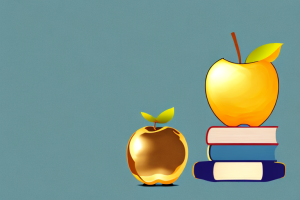Saving money is a crucial aspect of financial planning and security. It allows individuals to build wealth, have a safety net for emergencies, and achieve their long-term goals. However, not everyone in America has been successful in accumulating significant savings.
The Importance of Saving Money
Saving money is important for many reasons. It provides a sense of financial security, enabling individuals and families to weather unforeseen circumstances such as job loss, medical emergencies, or unexpected expenses. By saving, individuals have the means to cover these expenses without relying on credit or jeopardizing their financial well-being.
Saving money also allows individuals to achieve long-term financial goals. Whether it’s buying a home, funding higher education, starting a business, or retiring comfortably, having substantial savings paves the way for financial freedom and stability. Moreover, saving money can help individuals take advantage of investment opportunities, allowing their wealth to grow over time.
Understanding the Financial Landscape in America
In order to assess the number of Americans who have saved $500,000, it’s important to understand the broader financial landscape in America. According to recent studies, the average savings rate in the United States has been relatively low compared to other developed countries. This indicates that many individuals struggle to save a significant amount of money.
Several factors contribute to this: high levels of consumer debt, stagnant wages, and rising living costs. The combination of these factors makes it challenging for individuals to allocate a substantial portion of their income towards savings. Furthermore, a lack of financial education and planning may hinder individuals from effectively managing their money and saving for the future.
Exploring the Savings Habits of Americans
An analysis of the savings habits of Americans reveals a mixed picture. Some individuals prioritize saving and diligently set aside a portion of their income. These individuals are often guided by a strong sense of financial responsibility and a desire to achieve their financial goals. They are more likely to have a sizeable amount saved, including the coveted $500,000 milestone.
However, on the other end of the spectrum, many Americans struggle to save consistently or save at all. Unexpected expenses, debt obligations, and a lack of budgeting can impede savings efforts. Additionally, the allure of immediate gratification and consumer culture can lead some individuals to prioritize spending over saving.
These savings habits, along with other financial behaviors, are often influenced by factors such as age, income, education, and social background. Understanding these variables can shed light on the challenges individuals face when it comes to saving money.
The Elusive $500,000 Savings Milestone
Saving $500,000 is a significant milestone that demonstrates considerable financial discipline and long-term planning. While it may appear daunting for many individuals, it is attainable with the right strategies and commitments. However, due to the various financial constraints faced by Americans, only a fraction of the population manages to reach this milestone.
Several factors contribute to the elusiveness of this goal. Firstly, the average income and living costs in different regions of America play a vital role. Individuals residing in high-cost areas may struggle to allocate a substantial amount of their income towards savings, making it harder to reach the $500,000 mark.
Additionally, economic downturns and recessions can severely impact an individual’s ability to save. Unemployment rates rise, disposable income decreases, and financial priorities shift towards meeting basic needs rather than saving for the long term. These economic factors can significantly affect an individual’s progress towards accumulating $500,000 in savings.
Factors Influencing American’s Ability to Save $500,000
Several key factors significantly influence an individual’s ability to save $500,000:
1. Income: Higher income levels provide individuals with more disposable income, enabling them to save larger amounts. However, even individuals with modest incomes can make a concerted effort to prioritize saving.
2. Expenses: Managing expenses and keeping them in check is crucial for saving. Individuals who track their spending, minimize unnecessary purchases, and live within their means are more likely to save effectively.
3. Debt: Outstanding debt, particularly high-interest consumer debt, can hamper an individual’s savings efforts. It is essential to prioritize debt repayment while simultaneously setting aside funds for savings.
4. Financial Literacy: Having a strong understanding of personal finance and financial planning greatly impacts an individual’s ability to save and reach savings milestones. Investing time in financial education and seeking professional guidance can lead to improved savings habits.
Demographic Analysis: Who are the Americans Saving $500,000?
While the achievement of saving $500,000 is influenced by various factors, demographic analysis can provide valuable insights into the individuals most likely to reach this milestone. Certain demographic groups tend to exhibit higher savings rates and have an increased likelihood of accumulating $500,000 in savings.
For instance, individuals with higher levels of education have been found to save more. Higher education is often associated with higher-income levels and better job opportunities, providing individuals with the means to save more effectively.
Furthermore, individuals who have access to retirement savings accounts, such as 401(k)s or IRAs, may be more inclined to save substantial amounts. These retirement-focused accounts provide tax advantages and incentivize long-term savings, ultimately contributing to the accumulation of significant funds.
It is important to note that while certain demographic groups may be more likely to achieve the $500,000 savings mark, reaching this milestone is not exclusive to them. Individuals from all backgrounds and demographics can save effectively and achieve their long-term financial goals.
Tips and Strategies for Saving $500,000
Accumulating $500,000 in savings requires commitment, perseverance, and a well-thought-out financial plan. Here are some tips and strategies individuals can employ to reach this goal:
1. Establish a Budget: Creating a budget allows individuals to track their income and expenses, ensuring they prioritize saving and allocate a significant portion of their income towards this goal.
2. Pay Yourself First: Treat saving as a bill that needs to be paid. Set up automatic transfers from your paycheck to a designated savings account, ensuring consistent contributions.
3. Minimize Unnecessary Expenses: Identify areas where you can cut back on expenses and redirect those funds towards savings. Small sacrifices can have a significant impact over time.
4. Maximize Retirement Contributions: Take advantage of employer-sponsored retirement plans, such as 401(k)s, and contribute as much as possible. These accounts offer tax advantages and long-term growth potential.
5. Diversify Investments: Explore different investment options to grow your savings faster. Consult with a financial advisor to determine the best investment strategies based on your risk tolerance and goals.
The Role of Investments in Reaching the $500,000 Mark
While regular saving is essential, investments can play a crucial role in accelerating the growth of savings towards the $500,000 milestone. By investing wisely, individuals can take advantage of compounding returns, allowing their savings to grow faster over time.
Investment options such as stocks, bonds, mutual funds, real estate, and retirement accounts can help individuals multiply their savings. However, it is important to assess the risk associated with each investment and align it with personal risk tolerance and time horizon.
Moreover, engaging with a qualified financial advisor can provide individuals with expert guidance, ensuring they make informed investment decisions that align with their financial goals.
Common Obstacles to Saving $500,000 and How to Overcome Them
While savings goals are attainable, individuals often encounter obstacles along the way. Being aware of these obstacles can help individuals proactively address them and stay on track towards reaching $500,000 in savings.
1. Debt: High levels of consumer debt can impede savings efforts. Prioritizing debt repayment and adopting strategies like debt consolidation can help individuals free up funds to redirect towards savings.
2. Unforeseen Expenses: Unexpected financial emergencies can divert funds away from savings. Establishing an emergency fund can help mitigate the impact of unforeseen expenses, ensuring savings remain untouched.
3. Lifestyle Inflation: As individuals earn more, there is a tendency to increase spending accordingly. Avoiding lifestyle inflation and continuing to live within one’s means allows individuals to allocate additional funds towards savings goals.
4. Lack of Discipline: Consistency and discipline are key to achieving savings milestones. Establishing good saving habits, setting reminders, and automating contributions can help bolster discipline and ensure consistent progress.
Case Studies: Real Stories of Americans who Saved $500,000
Examining real-life stories of individuals who achieved the $500,000 savings milestone can provide inspiration and practical insights for others striving towards this goal. These case studies highlight various strategies, sacrifices, and approaches individuals took to reach their savings goals, offering valuable lessons and motivation.
By analyzing these real stories, individuals can gain a deeper understanding of what it takes to reach the $500,000 mark and adapt these strategies to their own financial journey.
The Psychological Impact of Achieving a $500,000 Savings Goal
Reaching a savings milestone as significant as $500,000 can have a profound psychological impact on individuals. It provides a sense of accomplishment, confidence, and financial security. Achieving this goal affirms an individual’s ability to exercise discipline, make financial decisions, and work towards their long-term objectives.
Furthermore, attaining the $500,000 savings goal can lead to reduced financial stress and anxiety, allowing individuals to shift their focus towards other aspirations and life goals. The feeling of financial freedom and stability paves the way for a brighter and more optimistic future.
Comparing Savings Rates: How Does America Stack Up?
Understanding how America compares to other countries in terms of savings rates provides important context. While the savings rate in the United States has been historically low, it is crucial to examine the reasons behind this and learn from other countries with higher savings rates.
Countries such as Germany, Switzerland, and Japan tend to have higher savings rates, often due to cultural and behavioral factors. Emphasizing education about personal finance, providing incentives for savings, and encouraging a culture of frugality can contribute to a higher national savings rate.
Examining these international comparisons helps shed light on potential areas for improvement and prompts policymakers to take steps towards encouraging a stronger savings culture in America.
Government Initiatives and Policies Promoting Saving in America
Recognizing the importance of saving, the U.S. government has implemented initiatives and policies to promote increased savings among Americans. Examples of these initiatives include retirement-specific programs such as Social Security, employer-sponsored retirement plans, and tax-advantaged Individual Retirement Accounts (IRAs).
The government also provides tax incentives for certain types of savings, such as Health Savings Accounts (HSAs) and 529 plans for education expenses. These programs encourage individuals to save for specific purposes while providing tax advantages that facilitate the growth of savings.
Furthermore, financial education programs and initiatives aimed at improving the financial literacy of Americans play a vital role in promoting saving behaviors. By equipping individuals with the knowledge and tools to make informed financial decisions, these initiatives empower Americans to prioritize saving and achieve their financial goals.
Balancing Short-Term Needs with Long-Term Financial Goals
While saving $500,000 is a worthy long-term goal, it is important to strike a balance between saving for the future and addressing current financial needs. It is crucial to avoid neglecting immediate financial responsibilities in pursuit of long-term objectives.
Creating a holistic financial plan that allows for short-term needs, such as housing, healthcare, and education, is essential. Prioritizing each stage of life and setting aside funds for both immediate and long-term goals helps individuals maintain financial stability while working towards building their savings.
By finding this balance, individuals can ensure that they are prepared for unforeseen circumstances while simultaneously creating a solid foundation for a secure financial future.
In conclusion, saving $500,000 is a significant financial milestone that requires dedication, discipline, and proper planning. While the task may seem daunting, it is within reach with the right strategies and commitment. Understanding the importance of saving, the financial landscape in America, and the various factors influencing savings can help individuals make informed decisions and achieve their long-term financial goals. By adopting effective saving strategies, balancing short-term needs with long-term goals, and seeking expert guidance when necessary, individuals can pave their way towards financial security and the achievement of the $500,000 savings milestone.



